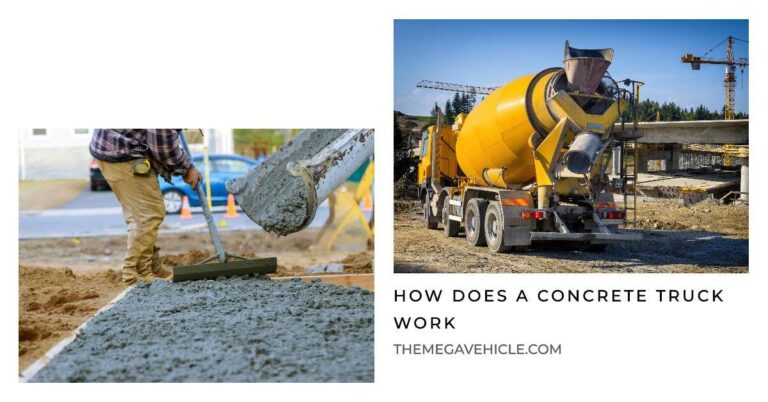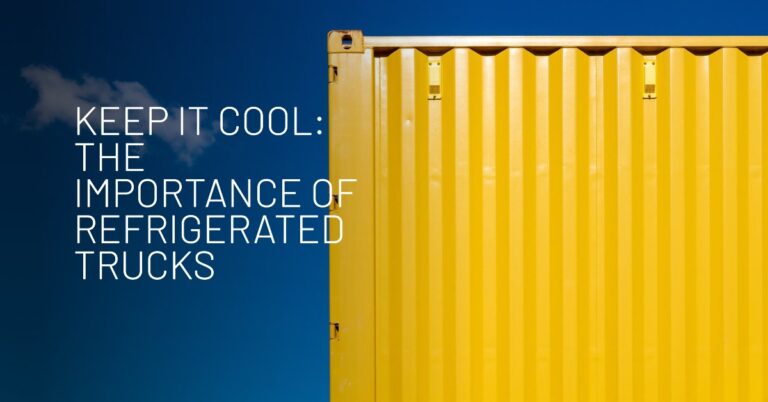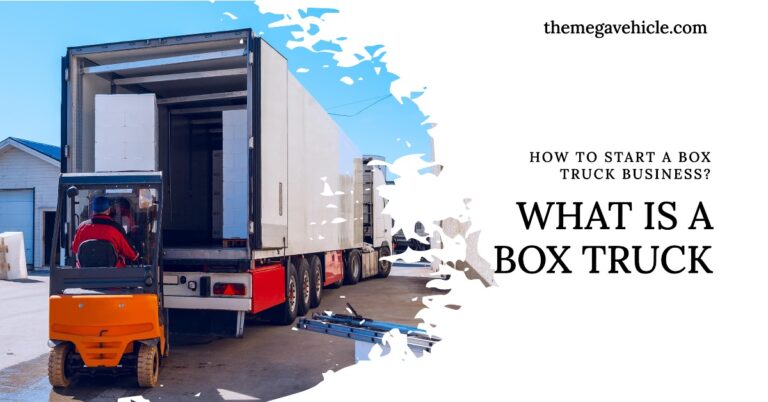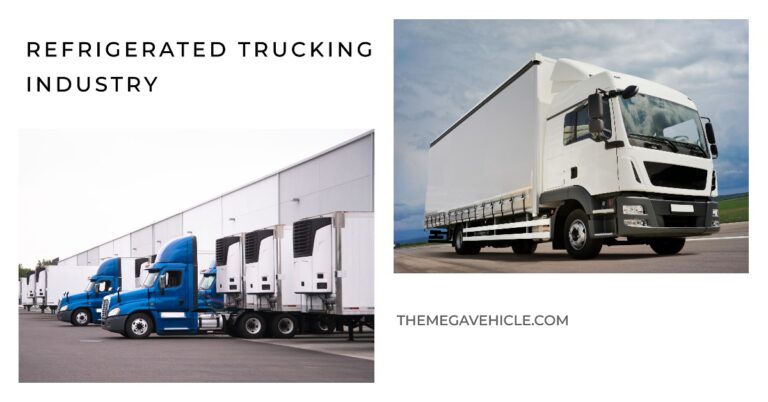What is a Stake Bed Truck? Everything You Need to Know
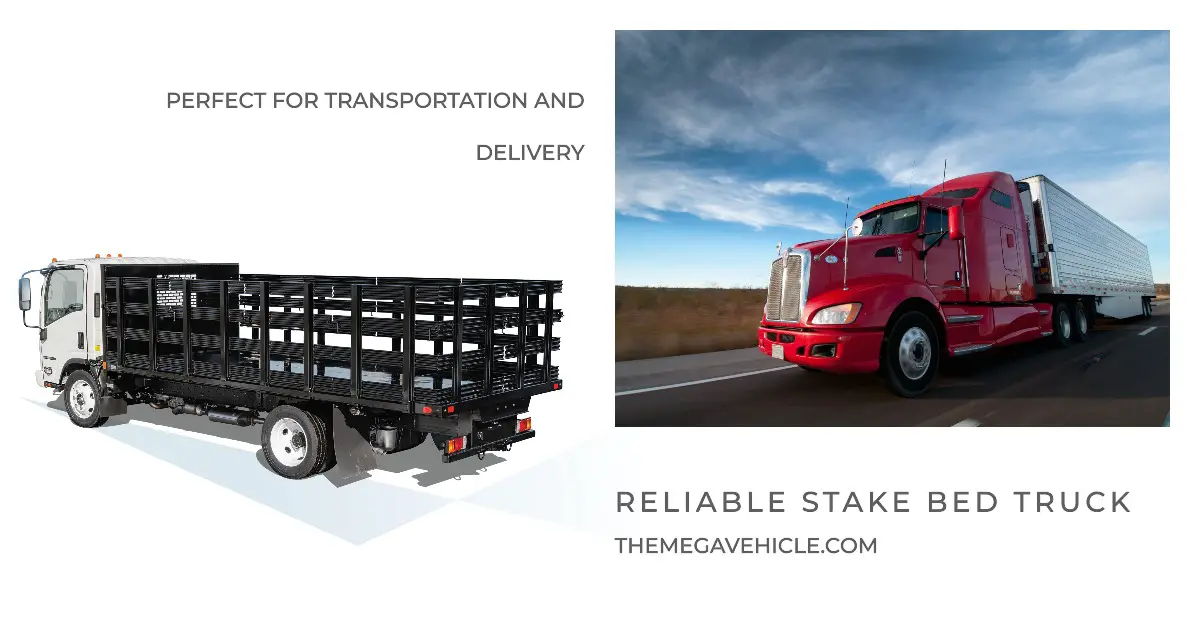
Stake bed truck, also known as flatbed truck with removable sides, are versatile vehicles commonly used in various industries for transporting goods and materials. These trucks feature an open cargo area with removable wooden or metal stakes on the sides, allowing for easy loading and unloading of bulky or irregularly shaped items.
Whether you’re a business owner needing a reliable workhorse or an individual with heavy-duty hauling requirements, a stake body truck can be an excellent choice due to its flexibility and practicality.
Table of Contents
Types of Stake Bed Trucks: Size and Capacity
Stake bed trucks are versatile vehicles that can be used for a variety of applications. However, it’s important to choose the right type and size of stake bed truck for your specific needs. Here are some of the most common types of stake bed trucks, along with their size and capacity specifications:
1. Light-duty stake bed trucks
Light-duty stake bed trucks are the smallest and lightest type of stake bed truck. They are typically used for smaller loads and shorter distances. Light-duty stake bed trucks typically have a bed size of 6 to 12 feet and a payload capacity of 6,000 to 15,000 pounds.
2. Medium-duty stake bed trucks
Medium-duty stake bed trucks offer a good balance of payload capacity and maneuverability. They are commonly used for local deliveries, construction projects, and landscaping businesses. Medium-duty stake bed trucks typically have a bed size of 12 to 24 feet and a payload capacity of 15,000 to 26,000 pounds.
3. Heavy-duty stake bed trucks
Heavy-duty stake bed trucks are the largest and most powerful type of stake bed truck. They are designed for demanding applications such as construction, agriculture, and transportation of large equipment. Heavy-duty stake bed trucks typically have a bed size of 24 to 30 feet and a payload capacity of 26,000 pounds to over 40,000 pounds.
Key Features to Consider When Choosing a Stake Bed Truck
When choosing a stake bed truck, there are a few key features to consider:
- Payload capacity: This is the total weight that the truck can safely carry, including cargo and passengers. Choose a truck with a payload capacity that meets or exceeds your needs.
- Bed length: Stake bed trucks come in a variety of bed lengths. Choose a bed length that is long enough to accommodate the cargo you typically transport.
- Durability and construction: Stake bed trucks are designed to handle heavy loads, so it is important to choose a truck that is well-built and durable. Look for a truck with a strong frame and high-quality materials.
- Safety features: Stake bed trucks are often used in demanding environments, so it is important to choose a truck with safety features such as anti-lock brakes, traction control, and air bags.
- Fuel efficiency: Fuel costs can be a significant expense for businesses, so it is important to choose a stake bed truck that is fuel-efficient. Look for a truck with a fuel-efficient engine and aerodynamic design.
- Customization options: Stake bed trucks can be customized with a variety of features, such as side racks, toolboxes, and winches. Consider which customization options are important to you and choose a truck that can be customized to meet your needs.
In addition to the above key features, you may also want to consider the following factors when choosing a stake bed truck:
- Price: Stake bed trucks can range in price from a few thousand dollars to tens of thousands of dollars. Choose a truck that fits your budget.
- Brand: Some popular brands of stake bed trucks include Ford, Chevrolet, and Ram. Consider which brand has a good reputation and offers the features and price that you need.
- Warranty: Choose a stake bed truck with a comprehensive warranty that covers repairs and parts for a period of time.
By carefully considering all of the factors above, you can choose the best stake bed truck for your needs.
Additional tips for choosing a stake bed truck:
- Talk to a truck dealer. A truck dealer can help you choose the right stake bed truck for your needs and budget.
- Read reviews. Read online reviews of different stake bed trucks to get an idea of what other owners are saying about them.
- Test drive a few trucks. Before you buy a stake bed truck, be sure to test drive a few different models to see which one is the best fit for you.
Uses of a Stake Bed Truck
A stake bed truck is a versatile vehicle that can be used for a wide range of applications in various industries. Here are some common examples:
1. Construction
Stake bed trucks are widely used in the construction industry to transport heavy building materials such as lumber, steel beams, concrete forms, and scaffolding. The removable stakes allow easy loading and unloading, making it a practical choice for construction sites.
2. Landscaping
With their spacious flatbed design, stake bed trucks are ideal for transporting landscaping equipment like lawnmowers, leaf blowers, and gardening tools. The sturdy stakes can also secure large plants or trees during transportation.
3. Agriculture and Farming
Stake bed trucks are commonly employed in the agricultural sector for hauling agrarian supplies such as fertilizer, seeds, and animal feed. The open flatbed allows for efficient loading and unloading of bulky items like hay bales or livestock crates.
4. Moving and Delivery Services
Stake bed trucks are often used by moving companies and delivery services due to their ability to transport large furniture, appliances, and boxes. The removable stakes offer flexibility in accommodating various sizes and shapes of cargo.
5. Event Planning
Stake bed trucks can play a significant role in event planning by transporting equipment such as staging materials, tents, chairs, tables, and audiovisual equipment. The open design allows for easy access and efficient setup at event venues.
6. Waste Management
Stake bed trucks are utilized in waste management operations to collect and transport bulk waste materials like scrap metal, construction debris, or large household items. The removable stakes enable quick loading and unloading of waste containers.
7. Commercial Operations
Many businesses that require frequent transportation of goods utilize stake bed trucks as part of their daily operations. These include wholesale distributors, retailers, and manufacturing companies that need to move products between warehouses or deliver goods to customers.
In short, the stake bed truck serves as a versatile workhorse across multiple industries. It’s flatbed design and removable stakes allow for efficient loading and unloading of different types of cargo, making it an essential tool for construction, landscaping, agriculture, moving services, event planning, waste management, and commercial operations.
Benefits of using a stake bed truck
Stake bed trucks are a versatile and durable type of commercial vehicle that can be used for a wide range of applications in various industries. They offer a number of benefits, including:
- Versatility: Stake bed trucks can be used for a wide range of applications, making them a valuable asset for businesses in various industries.
- Increased Payload Capacity: Stake bed trucks have a high payload capacity, which means they can transport large and heavy loads. This makes them ideal for businesses that need to transport a lot of materials or equipment.
- Secure Transport: These trucks have removable stakes that can be used to secure loads of all shapes and sizes. This helps to prevent loads from shifting or falling out of the truck during transport.
- Easy Access: The open flatbed design of stake bed trucks makes it easy to load and unload cargo. This can be especially beneficial for businesses that need to load and unload large or heavy items frequently.
- Flexibility & Customization Options: Stake bed trucks can be customized with a variety of features, such as side racks, toolboxes, and winches, to meet the specific needs of different businesses. This flexibility makes stake bed trucks a valuable asset for businesses in a variety of industries.
- Cost-Effective: Stake bed trucks are typically more affordable than other types of commercial vehicles, such as dump trucks and tractor-trailers. This makes them a cost-effective option for businesses of all sizes.
Safety Tips for Stake Bed Truck Operators
Operating a stake bed truck safely requires following certain precautions and best practices. Here are some essential tips to keep in mind:
I. Secure your load:
- Use the removable stakes and tie-downs to secure all loads, regardless of size or shape.
- Make sure that loads are evenly distributed on the truck bed to prevent shifting.
- Use additional tie-downs or straps to secure loads that are particularly heavy or bulky.
II. Check weight limits:
- Do not overload the truck bed. Be aware of the truck’s payload capacity and ensure that the load weight does not exceed it.
- Check the weight of your load before transporting it. You can use a truck scale or weighbridge to do this.
III. Perform regular maintenance:
- Inspect the truck regularly for any signs of damage or wear and tear.
- Have the truck serviced by a qualified mechanic on a regular basis.
- Pay special attention to the brakes, tires, and suspension system.
IV. Observe speed limits:
- Drive at a safe speed, especially when transporting heavy or bulky loads.
- Be aware of the road conditions and adjust your speed accordingly.
V. Use caution when loading and unloading:
- Be careful when loading and unloading the truck bed. Avoid sudden movements that could cause the load to shift.
- Use a ladder or other safety device to access the truck bed.
VI. Practice defensive driving:
- Be aware of your surroundings and anticipate the actions of other drivers.
- Leave plenty of space between your truck and the vehicles in front of you.
- Avoid sudden braking and acceleration.
VII. Wear appropriate personal protective equipment (PPE):
- Wear gloves, safety glasses, and other appropriate PPE when operating a stake bed truck.
- This will help to protect you from injuries in the event of an accident or other mishap.
By following these safety tips, you can help to ensure that you safely operate stake bed trucks, protecting yourself, your cargo, and other road users.
Additional tips:
- Be extra cautious when driving in windy conditions.
- Avoid driving on uneven or slippery surfaces.
- Be aware of the height of your truck and avoid overhead obstructions.
- Use your turn signals and other signaling devices whenever necessary.
By following these additional tips, you can further reduce the risk of accidents and injuries while operating a stake bed truck.
Keep Your Stake Bed Truck Running Smoothly with Regular Maintenance
These trucks require regular maintenance to keep them running smoothly and safely. Here are some key maintenance guidelines to follow:
- Regular Inspections: Inspect your stake bed truck regularly for signs of wear and tear, such as loose bolts, damaged stakes, and worn-out tires. Address any problems immediately to prevent them from worsening and ensure the safety of your truck.
- Fluid Checks: Check the fluid levels in your stake bed truck regularly and top them off as needed. This includes brake fluid, engine oil, transmission fluid, and coolant. Consult your owner’s manual for specific recommendations on fluid types and change intervals.
- Scheduled Servicing: Follow the manufacturer’s recommended service schedule for your stake bed truck. This typically includes oil changes, filter replacements, and other routine maintenance tasks. Regular servicing helps prevent major breakdowns and keeps your truck running smoothly.
- Tire Maintenance: Check your tire pressure regularly and ensure it is at the manufacturer’s recommended level. Rotate the tires periodically to promote even wear and extend their lifespan. Inspect the tires for signs of damage or uneven wear, and have them repaired or replaced as needed.
- Cleaning and Rust Prevention: Clean your stake bed truck regularly to remove dirt, debris, and corrosive materials. Pay special attention to areas prone to rusting, such as the undercarriage and stake pockets. Apply a suitable rust inhibitor or protective coating to prevent corrosion.
In addition to the above guidelines, here are some additional tips for maintaining your stake bed truck:
- Keep your truck bed clean and free of debris. This will help prevent corrosion and make it easier to inspect the truck for damage.
- Lubricate all moving parts regularly. This includes the suspension, steering system, and brake system.
- Have your brakes inspected and serviced regularly. This is especially important if you use your stake bed truck for heavy-duty hauling.
- Inspect the wiring and electrical system regularly. Look for any signs of damage or corrosion.
- Use high-quality fluids and lubricants that meet the manufacturer’s specifications.
By following these maintenance guidelines, you can help to ensure that your stake bed truck provides you with years of reliable service.
People Also Ask
Q1. What is the difference between a flatbed and a stake bed?
A. A flatbed is a type of truck bed that has a completely flat surface without any sides or walls. It is primarily used for transporting large, heavy items requiring an open space. On the other hand, a stake bed has removable wooden or metal stakes along the sides of the bed. These stakes provide additional support and security for cargo, making it suitable for hauling smaller items or materials that need to be contained within the bed.
Q2. What kind of wood is used for stake bed trucks?
A. The most common type of wood used for stake beds is hardwood, such as oak or maple. These woods are preferred for their durability and strength, which allows them to withstand heavy loads and rough conditions on the road.

